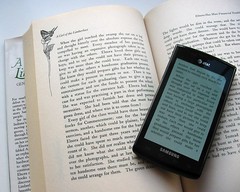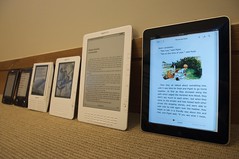
Speakers: Tina Chrzastowski, Santa Clara University; Lynn Wiley, University of Illinois at Urbana-Champaign
Ebook use in their survey follows the definition of COUNTER BR2. They cannot get all ebook publishers to provide that data, and not all of the ones that provide the data uses COUNTER.
They saw a spike in use in FY14. Two things happened: ebooks get used more over time, and they’ve got 8 years of data now. And, they implemented Primo. Discovery has a huge impact on ebook use.
UIUC science faculty love ebooks. They didn’t do a DDA program for them because they already buy just about everything.
It was easier to buy non-science ebooks in packages, though this caused complications with trying to figure out the funding from many different pots. They would prefer to buy new ebook content title-by-title.
They used eBrary with a mix of STL and DDA. After the third STL at 10-15% of list price, they purchased the ebook. This meant they didn’t buy everything that was used, but they ended up spending much less over-all as a result.
They loaded the records, including those they already owned in print. They were alerted of any STL use. Purchased titles were also checked to see if there was other availability such as the print copy. They do book delivery for faculty, so they were interested in which version would be used when both are fairly easy and fast.
There was a lot of good use across the disciplines, but relatively small numbers of titles were used enough to trigger the purchase (more than 3 STLs). These were all multi-user titles, so for each STL triggered, many people could use it during that 24 hour period. On average, there were around 4-5 user sessions per title for both the Humanities and Social Science pilots.
For the Social Sciences, they found that 67% of the STLs were owned in print, with 73% of them available to be requested if the user wanted that format. For the Humanities, 80% were owned in print and 71% of those titles were available.
Based on the metrics from eBrary, they could make some conclusions about what the users were doing in that content. “Quick dips” were less than 9 pages looked at, printed, copied, and no downloads. “Low” was 10-25 pages viewed, printed, etc. and no downloads. “Moderate” 26-45 pages used with a chaper download. “High” up to 299 pages and chapter downloads. “Deep” significant views or whole-book download. They might want to combine deep and high.
In the social sciences, 80% of the use came from quick and low, with no real deep reading. In the humanities, about 46% of the use came from quick and low, with the remaining coming from moderate and high use, and two books fell into the deep category.
They followed up the DDA program with surveys of the faculty and graduate students for the books triggered in the program. They used SurveyMonkey and gift cards for incentives.
They had questions about the perceptions of ebooks, and used skip logic to direct them to specific books in their discipline to use and then respond to questions about that book. It took about 20 minutes to complete. Around 15% of the Humanities responded and 25% of the Social Sciences responded.
They included a question about ejournals to put them in the frame of mind of other electronic things they use. Given the options for book formats, though, they found that most of the respondents would prefer to use mostly print with sometimes ebook.
Every discipline expects that they would be able to download most or all of an ebook, and that the ebook will always be accessible and available (translating to unlimited simultaneous users, no DRM, etc.).
The humanities haven’t quite reached the tipping point of the shift towards ebook use, but the social sciences think that in 5 years, most of their monographic use will be electronic.
Availability and accessibility is the tipping point for chosing a preferred format. If the print book is unavailable, then they are most likely to use the ebook than ask the library to buy another copy or borrow another copy.
In the end, though, it’s still just a “big ol’ hassle” to work with ebooks compared to how we’re used to using books. For many, the note-taking ability or the technology to better use the ebooks were a hinderance.
What do all disciplines want? More ebooks, more current ebook titles, fewer restrictions on copying and printing.
Image reproduction and copyright are big issues — ebooks need all the content that is in the print book. People want consistency between platforms.
We’re still in the early evolution of ebooks. Many changes are yet to come, including copyright changes, tablet and reader evolution, platform consolidation, and things we have not yet thought of.
Readers and scholars are ready for the ebook revolution. How will the library respond?






